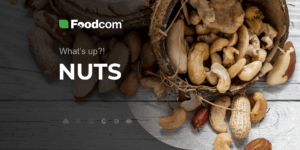- Cocoa prices have reached record levels of over $10,000 per ton, destabilizing the global supply chain and forcing producers to reformulate their products.
- Chocolate consumption remains steady, but its nature is changing—the importance of quality, function, and origin of raw materials is growing.
- Developing regions such as Latin America and Asia are becoming key areas of growth and innovation in the chocolate market.
- Sustainability is becoming the norm rather than a choice, with consumers and regulations demanding full transparency and ethics in production.
The rise in cocoa prices to record levels in 2024 has shaken up the global chocolate market. The raw material crisis, climate change and rising consumer expectations have forced the industry to adapt at an accelerated pace. In this report, we analyse the key changes, challenges and developments that will define the market in 2025.
Global chocolate market analysis 2024
The year 2024 has proven to be a turning point for the global chocolate market. Cocoa – the foundation of the entire industry – reached historically high prices, surpassing USD 10,000 per tonne in the spring (data: ICE Futures Europe), almost quadrupling from the averages of 2021-2022. Such a sharp jump in the cost of the raw material threw the entire supply chain off balance, forcing producers to make difficult decisions: cutting production, changing recipes and seeking cheaper substitutes.
The source of the crisis was primarily the situation in West Africa – a region accounting for more than 70% of the world’s cocoa supply. Ghana and Côte d’Ivoire, which together account for around 60% of world production, saw yields fall by 35% and 34% year-on-year respectively (ICCO, January 2024). Droughts, weather anomalies and plant diseases have destroyed a significant proportion of plantations, while logistical disruptions and lack of access to crop protection products have only exacerbated the problem.
Despite price spikes, global demand did not fall immediately. Chocolate consumption remained strong, although in the US, for example, chocolate bar sales declined in the first half of the year (NIQ, 2024). In response to rising costs, manufacturers – especially in the economy segment – acted quickly: they reduced grammages, changed compositions without explicitly changing labels and increasingly turned to cheaper toppings or additives such as carob. This often meant a compromise between quality and profitability, but allowed them to maintain their market presence.
In the premium segment, reformulations were defended against, but there were tensions there too – production of bestsellers was reduced and distribution was managed more selectively. Even the most prestigious brands did not escape cost pressures.
The most profound change, however, has been on the consumer side. Chocolate, hitherto regarded as an everyday pleasure, began to be seen as an optional good. In markets with lower purchasing power, consumers were more likely to forgo purchases or turn to cheaper substitutes. This is a clear signal that the market is entering a new phase: less predictable, more strongly differentiated and much more sensitive to raw material prices.
Regional analysis of the chocolate market (2024 – Q1 2025)
Europe
Europe remains the largest chocolate market in the world, accounting for around 50% of global sales. Despite the historic rise in cocoa prices – which have tripled in two years due to adverse weather conditions and crop disease in West Africa – European consumers show strong loyalty to chocolate. Companies such as Mondelez, with 60% of chocolate sales in Europe, have maintained stable sales volumes despite higher prices, thanks to chocolate being seen as an everyday food item rather than an impulse purchase.
North America
In the US, which accounts for around 25% of global chocolate sales, consumers are more price-sensitive. An increase in the cost of cocoa of around 86% compared to the previous year has depressed demand. In addition, the growing popularity of GLP-1 drugs, which suppress appetite, and changing eating habits are contributing to the decline in confectionery consumption. Companies such as Hershey, with 87% of sales concentrated in the US, saw a greater decline in profits compared to companies with a stronger presence in Europe.
Asia Pacific
The Asia-Pacific region is experiencing strong growth in the chocolate market, driven by increasing interest in premium and health products. Countries such as China, India and Japan are seeing an increase in demand for organic, sugar-free and functional chocolates containing adaptogens or probiotics. Product innovations such as chocolates with superfoods respond to changing consumer preferences.
Africa and the Middle East
In Latin America, particularly Brazil and Mexico, the chocolate market is growing due to a growing middle class and increased access to premium products. In the Middle East, products such as ‘Dubai chocolate‘, combining local flavours with chocolate, are gaining popularity thanks to social media and unique flavour profiles.
2025 – trends and forecasts in the chocolate market
The year 2025 began for the chocolate market in the shadow of record cocoa prices. The raw material surpassed USD 10 500 per tonne in Q1, keeping cost pressures high across the value chain. Despite this, the outlook is not unequivocally pessimistic – the market is not about to give up on chocolate, but is changing the way it is produced, positioned and consumed.
Cocoa price forecasts
Analysts predict that cocoa prices will remain at USD 9 000-11 000 per tonne in 2025, depending on weather conditions in West Africa and global supply. The baseline scenarios assume moderate stabilisation after H1, although the risk of further climate disruption remains real.
Growing role of commodity alternatives
In response to more expensive cocoa, producers are intensifying product reformulation. Partial substitutes – such as carob, chickpeas or cereal blends – are increasingly being used. Although this mainly applies to mass products, more and more solutions are also appearing in the functional and vegan segments. In the background, work is also underway on so-called laboratory chocolate, which could in future make the market independent of changing climatic conditions.
Consumption: less but better
Consumers, especially in Europe and Japan, are reaching for chocolate less often, but are choosing better quality products – organic, short-form, premium. The segment of functional chocolates, e.g. for immunity or mood support, is also experiencing growth, opening the way for companies to enter new categories: healthy snacks and nutraceuticals.
Emerging markets: investment and diversification
Latin America, India and ASEAN countries are becoming targets for new investment – both in manufacturing and processing. The growth of local consumption is driving the development of smaller national brands, which are increasingly competing not only on price, but also on quality and local identity. This phenomenon is likely to undermine the dominance of the largest players in the long term.
Sustainability – from exception to standard
Certification, raw material traceability, carbon footprint reduction and ethical production are no longer an option – they are becoming a requirement. Consumers expect full transparency and new regulations, especially in the EU, formalise these expectations. For producers, this is not only a challenge, but also an opportunity to stand out – especially in the premium segment.
“The global chocolate market has reached a turning point. Record cocoa prices, climate change and rising consumer expectations have caused the industry to transform instead of defending the status quo. On the one hand, we are seeing a migration towards cheaper substitutes and simpler ingredients, while on the other, there is an increasing emphasis on product quality, origin and function. Chocolate remains present, but its importance is changing – both technologically and culturally.”

Foodcom S.A. global reports.
Curious about what’s next for chocolate? Discover the latest trends and insights that will shape the final months of 2025. Visit our blog as we regularly update our global reports. Stay up to date with Foodcom S.A.
![Overview and analysis of the chocolate market in 2025 [Global Report] Overview and analysis of the chocolate market in 2025 [Global Report]](https://foodcom.pl/wp-content/uploads/2025/06/gr-czekolada-1520x760.png)



![Przegląd i analiza rynku nasion w 2025 [Global Report] Przegląd i analiza rynku nasion w 2025 [Global Report]](https://foodcom.pl/wp-content/uploads/2025/05/Global-Report-szablon-pod-bloga-seeds-300x150.png)



